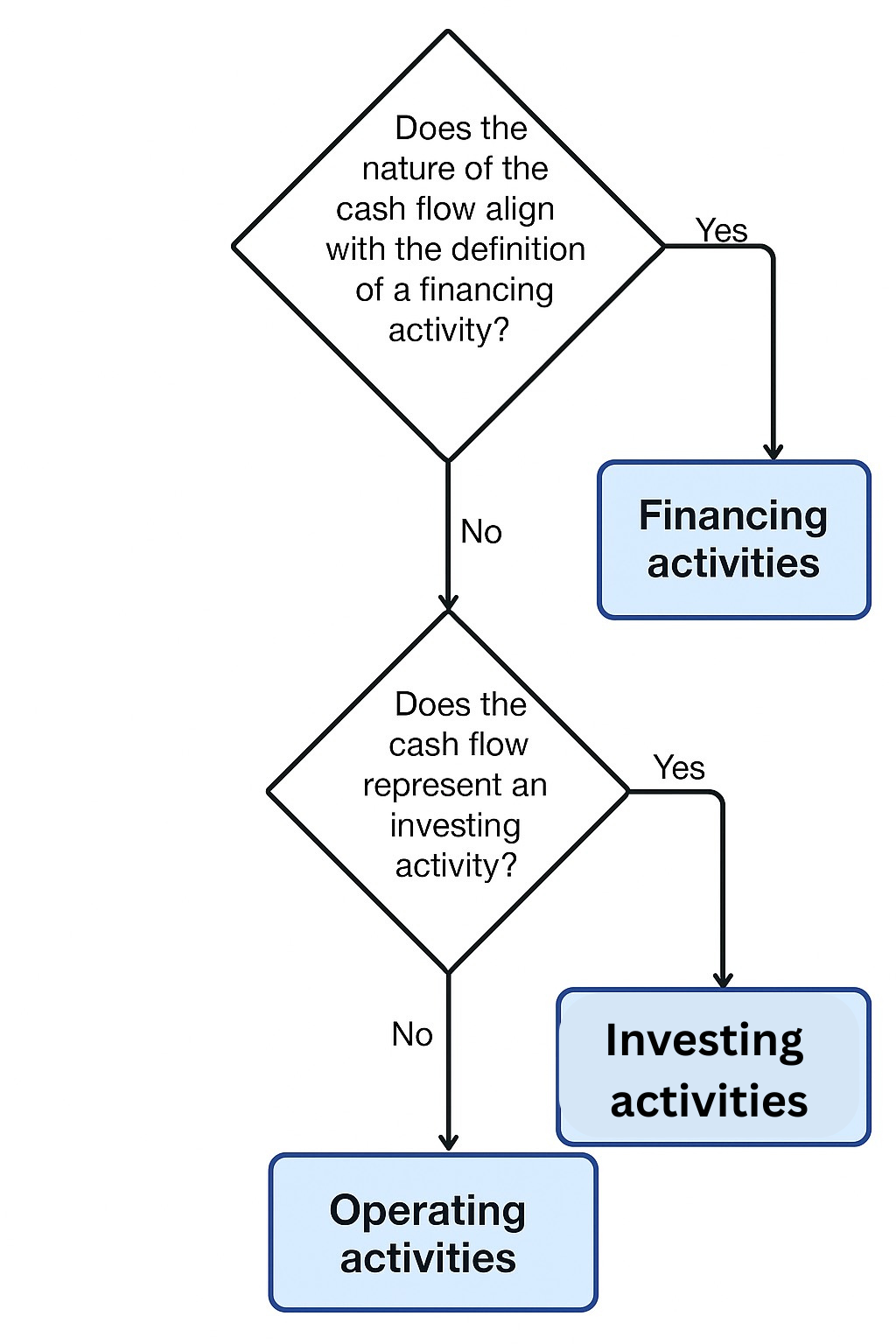The cash flow statement often doesn’t get as much attention as the balance sheet or income statement. However, it stands as one of the most important financial tools any business can have. You’ve probably heard the adage, “Cash is king,” and in the business world, this couldn’t ring truer. After all, cash is the lifeline that keeps businesses running – from covering daily operations to funding ambitious projects.
Without a healthy flow of cash, even the most profitable businesses can stumble. While an impressive earnings report might paint a rosy picture, they don’t always tell the full story of a company’s financial health. This is precisely where cash flow statements come in. Not only does it go beyond simply tracking performance, but it also provides critical insight into cash movements. In this post, you’ll learn what a cash flow statement is, why it matters, and how to create one using a clear example to guide you.
What Is a Cash Flow Statement?
Simply put, it’s a financial report that details all the cash inflows (money coming into the business) and cash outflows (money coming out of the business) over a specific period. Think of it like this: suppose your company starts the year with $100 in its bank account. By March 31, 2025, the bank statement shows a balance of $500. Over these three months, you notice $500 in cash inflows but also $100 in cash outflows. The result? Your company’s cash balance has increased by $400. The big question is: where did that money come from, and how was it spent? The cash flow statement answers exactly that—it breaks down these movements so you can see the sources of incoming cash and understand how it’s being used. As a result, it offers a clearer and more accurate view of your business’s financial health.
The Importance of the Cash Flow Statement
Preparing a cash flow statement alongside other financial statements brings several advantages to businesses.
- Preparing a cash flow statement helps businesses gain insight into their liquidity. By showing the net cash flow available at the end of the period, it indicates the funds readily available to meet future obligations.
- The statement of cash flow helps businesses to reconcile net income with cash flow: They can understand the differences between reported profits and the actual cash generated when prepared alongside the income statement and the balance sheet.
- It can provide an early signal of possible financial distress in situations where there is a negative cash flow over periods of time. For instance, consistent negative cash flow from operations—even when profits appear strong—can indicate problems with collections, overspending, or poor inventory management. By monitoring these patterns regularly, business owners can take corrective action before the issues escalate.
Cash Flow Statement vs. Other Financial Statements
The income statement, balance sheet, and statement of cash flows are the core financial statements. The income statement shows a company’s performance over time, and the balance sheet provides a financial snapshot at a specific point. In contrast, the statement of cash flows is prepared on a cash basis, detailing the movement of cash and cash equivalents during a period.
Presentation of Cash Flow
A cash flow statement details how cash moves in and out of a business by categorizing it into three main sections:
- Cash flow from operating activities reports cash generated or spent on the day-to-day activities of the business, such as sales and expenses.
- Cash flow from investing activities reports cash spent on or generated from investment-related activities such as the purchase or sale of non-current assets like furniture, equipment.
- Cash flow from financing activities reports cash related to raising capital, such as shares purchased or sold.
The chart below walks you through how to classify different types of cash flows into these categories.
Operating Activities
The operating activities section of the statement of cash flows focuses primarily on cash movements related to the core operations of the business(the day-to-day running of the business), excluding transactions classified as investing or financing activities. For example, if you run a boutique, the cash received from the sales and the cash spent on inventory would fall under operating activities.
Direct vs. Indirect Method
There are two ways to present the cash flow from operating activities: the direct method and the indirect method.
The direct method
The direct method of preparing the statement of cash flows reports the actual cash inflows and outflows related to the business’s operating activities, including specific cash transactions such as cash received from customers and cash paid for goods and services.
The indirect method
The indirect method of preparing the statement of cash flows begins with net income, as reported on the income statement. This method then adjusts net income for non-cash items, such as depreciation, amortization, and changes in working capital, to arrive at the cash flow from operating activities.
| Direct Method | Indirect Method | ||
| Operating activities | Operating activities | ||
| Cash received from customers | xx | Net income | xx |
| Cash paid to suppliers | (xx) | Add back: depreciation | xx |
| Tax paid | (xx) | Adjust for movements in working capital | xx |
| Cash flows from operating activities | xxx | Cash flows from operating activities | xxx |
| Investing activities | Investing activities | ||
| Purchase of machinery | (xx) | Purchase of machinery | (xx) |
| Disposal of equipment | xx | Disposal of equipment | xx |
| Cash flows from investing activities | xxx | Cash flows from investing activities | xxx |
| Financing activities | Financing activities | ||
| Receipts from borrowing | xx | Receipts from borrowing | xx |
| Repayment of debt | (xx) | Repayment of debt | (xx) |
| Cash flows from financing activities | xxx | Cash flows from financing activities | xxx |
When comparing the direct and indirect methods of cash flow statement presentation, the operating activities section is the only area of divergence. Both methods present investing and financing activities in the same way. The crucial difference lies in the operating activities section: the indirect method starts with net income and adjusts it for non-cash items, whereas the direct method tracks the actual cash received and paid out for operating activities.
How to Prepare a Cash Flow Statement Using the Indirect Method
While accounting standards accept both the direct and indirect methods, the indirect approach is more commonly used in practice, mostly because the information needed to prepare the operating section is readily available from the other financials such as the income statement and the balance sheet. For the next section, we will focus on providing examples based on the indirect method.
To prepare a cash flow statement using the indirect method, begin with net income and adjust it for non-cash items and changes in working capital. Then, include the cash flows from investing and financing activities to calculate the net change in cash. Finally, add the beginning cash balance to the net change in cash to determine the ending cash balance. Here’s a sample cash flow statement prepared using the indirect method to illustrate the process.
Sample Cash Flow Statement (Indirect Method)
For the Year Ended December 31, 2023
| Cash Flows from Operating Activities | |
| Net income: | $40,000 |
| Adjustments for non-cash items: | |
| Depreciation: | $5,000 |
| Changes in working capital: | |
| Increase in accounts receivable: | ($2,000) |
| Decrease in inventory: | $1,500 |
| Increase in accounts payable: | $3,000 |
| Net Cash Provided by Operating Activities | $47,500 |
| Cash Flows from Investing Activities | |
| Purchase of equipment: | ($10,000) |
| Proceeds from sale of machinery: | $4,000 |
| Net Cash Used in Investing Activities | ($6,000) |
| Cash Flows from Financing Activities | |
| receipt of borrowings: | $15,000 |
| Dividends paid: | ($3,000) |
| Net Cash Provided by Financing Activities | $12,000 |
| Net Increase in Cash | $53,500 |
| Beginning Cash Balance | $10,000 |
| Ending Cash Balance | $63,500 |
As shown in the example above, we began with net income from the income statement. We then added back non-cash items, such as depreciation, which also comes from the income statement. Since depreciation had been deducted when calculating net income, we added it back to reflect the actual cash flow. Next, we adjusted for changes in current assets and liabilities from the balance sheet to calculate the net cash flow from operating activities. After that, we added the cash flows from investing and financing activities to the cash from operations. This gave us the net change in cash for the period. Finally, we added the beginning cash balance to this net change to arrive at the ending cash balance.
Understanding your cash flow isn’t just good accounting—it’s smart business. While profit might tell you how successful your business looks on paper, cash flow reveals how healthy it actually is. The cash flow statement helps you connect the dots between operations, investing decisions, and financing activities so you can stay in control of your money—not the other way around.
If you haven’t given your cash flow statement the attention it deserves, now’s the time to start. Use the indirect method we covered above as a practical way to get started, and revisit it regularly to spot trends, risks, and opportunities.
If you’re interested in applying the concept of cash flow beyond business and into your everyday life, be sure to check out my blog post on how to create a personal cash flow statement. It breaks down the steps to track your income and expenses, helping you gain better control over your money and make informed financial decisions at home—just like a business would.
FAQ: Cash Flow Statement
- Why doesn’t the income statement show my actual cash position?
The income statement records revenue when earned and expenses when incurred, not when cash changes hands. This can give a misleading picture of cash on hand.
- What makes the cash flow statement different?
It tracks actual cash inflows and outflows, giving a real-time snapshot of how money moves through your business—something the income statement and balance sheet can’t do on their own.
- Can a business be profitable but still run out of cash?
Yes. A business might show profit on the income statement but run into cash shortages if customers delay payments or inventory ties up funds. The cash flow statement highlights this risk.
- Why is the cash flow statement important for decision-making?
It helps business owners see whether they have enough cash to cover bills, reinvest in the business, or take on new opportunities—key insights not visible from other statements.
- What are operating, investing, and financing activities?
These are the three sections of a cash flow statement:
Operating: Day-to-day cash transactions
Investing: Buying/selling long-term assets
Financing: Loans, repayments, or investor funding
